How to Run a Website Redesign Workshop: Kicking off a Growth-Driven Design
In this article I’m going to talk about steps and processes for running a great Growth-Driven Design (GDD) Strategy workshop. A successful workshop is essential for delivering a successful launch pad website - make your next website redesign awesome!
I share my experience and include practical hints and tips learned from running these sessions for clients - I’d love to hear your thoughts and ideas too.
Why do we need a strategy workshop?
Strategy workshops are a big time investment - you need at least half a day - my experience is that you should ideally allow for 5 or 6 hours with a lunch break in the middle. It is common to under-estimate how much time it will take. If you're unsure, book an entire day and if you end early, even better.
The web strategy session is a clear GDD step in it’s own right for this very reason: it will give focus toward your goals and springboard you into launch pad and continuous improvement.
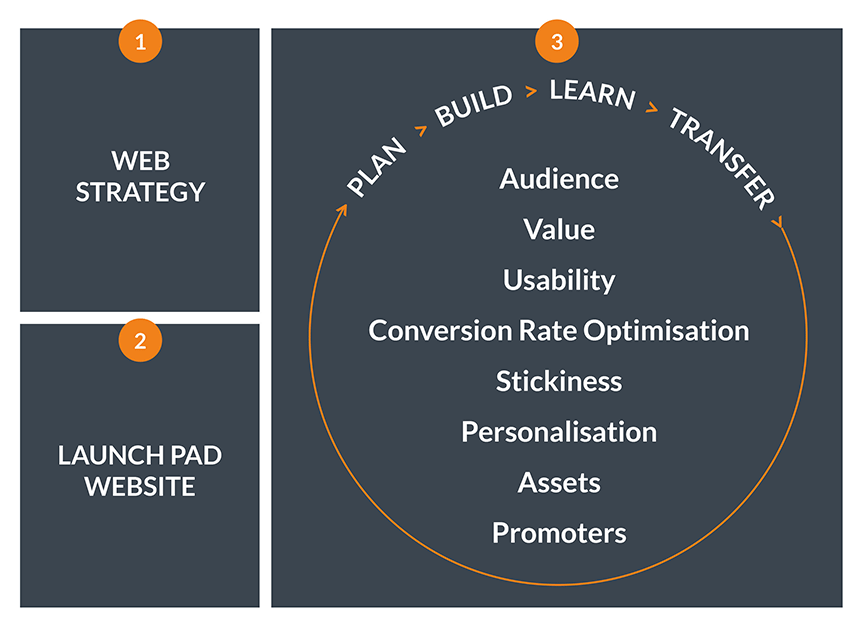
Don’t just take my word for it. Here are some of our clients thoughts about the benefits of the strategy workshop:
“The GDD strategy meeting gave us the platform to get key stakeholders together in a structured environment and to effectively think out the customer journey. Building on our primary persona, we were able to determine what is important to them. The session allowed us to be pretty ruthless about our MVP - previously I have been involved in the creation of a huge website where some things just were not needed but they got built, costing time and money.”
Tracy Steel, Carewatch Marketing Manager
“We’re a small marketing team on a journey to establish a new corporate identity alongside a new marketing automation programme and a developing product portfolio. So agility and flexibility are crucial. What worked well for us was the ability to make a fast start, capture all our stakeholder’s needs and wants and to keep track of these, without the pain of a waterfall approach and its inevitable delays and frustrations”
Dan Wright, VWFS Fleet Marketing Manager
Pre-work
Pre-work for the client/Stakeholders
The more advance information you can get from a client or stakeholders the more prepared you can be. This will enable you to really focus your time and energy during the strategy session. It's particularly revenue related goals and sales targets that are good to know beforehand, things like:
- Lifetime customer value;
- Average spend per customer;
- Conversion rates of lead to customer (via website and overall);
- Current sales process and drop-off points;
- How goals and targets are set and who owns them;
- What part the website is expected to play in achieving business goals.
Additionally, if the client has any existing buyer personas then ask them to send these over ahead of the workshop. You should stress to the client that it is their responsibility to get all their relevant stakeholders to attend the strategy session - sales and marketing are essential, possibly also IT and C-level depending on their structure.
Pre-work for Your team
You want the GDD workshop to run smoothly? Then put some effort in beforehand to structure and plan the session. Make sure all your relevant team members can attend and their know their role in the meeting. Who is taking notes? Who’s going to capture points on the whiteboard? Who is ordering lunch?
Create a slide deck (or similar) that will allow you to control the flow of the workshop. Allocate timings to each section and set-expectations. Share these slides with your main client stakeholder before the workshop so that they can confirm everything they want is covered.
Pro tip: create a GDD workshop agenda that you can use time and again. Standardize your strategy session process - make sure all client facing staff know how to run a GDD workshop and what is expected of attendees.
Example agenda items:
- Setting Goals
- Defining Your Personas
- Making Fundamental Assumptions
- Creating a User Journey Map
- Creating a Wish List
Example objectives:
- To devise the [insert company name] website strategy
- To produce a wish list of website features and priorities
- To evaluate options for traditional website design and Growth-Driven Design
- To provide sufficient information for [insert agency name] to produce a website concept and a statement of works document
Pro tip: before the workshop make sure you have flip charts / white board, post-it notes and pens available. Check the marker pens work - trying to write on a flip-chart with a pen that has virtually run out does not make you look very professional! You’ll look even worse if you then have to spend 5 minutes hunting around your office for a new pen.
Pro tip: Come up with 10+ questions that you can open up to the group to get discussion going. Your job is to be a facilitator and ask the right questions. Coming into the workshop with as many questions, ordered in importance, will help ensure that you get the importantdiscussions going.
On the day
Pro tip: Biscuits, lunch, tea, coffee - be a great host. Deliver an environment where clients want to hang-out and be people they like to spend time with.
GDD vs Traditional Website Design
If GDD is new for the client or stakeholders - or if some of the attendees haven’t been involved with pre-sales discussions, then I’d suggest you start the workshop with a GDD recap. We’ve found that the following diagram really helps summarize why GDD is the logical choice. Getting all attendees to buy into GDD at the beginning of the workshop is essential - take the time needed to answer any questions about the process.
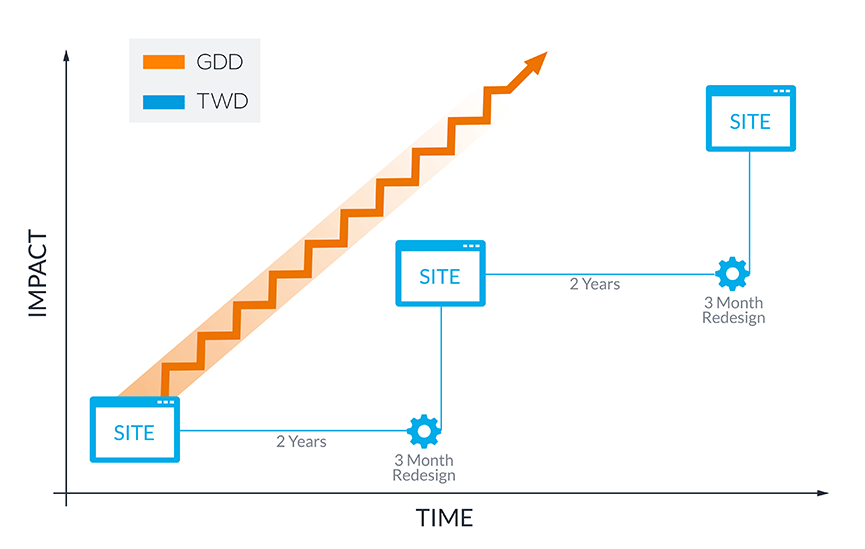
I like posing these two questions:
Q1. Who here has worked on website projects before (all hands go up)
Q2. How many of those projects were late and / or over budget?
(people agree this happened on most of their traditional website redesign projects)
This tends to both break the ice - people often have tales about how badly previous traditional web design projects have gone - and you’ll get buy-in to the purpose of your GDD workshop.
The copy and videos on the Growth-Driven Design home page serve as the perfect script with soundbites. You can even get access to all of the pre-built slide decks in the Growth-Driven Design certification in order to hit the ground running with building decks.
Pro tip: Have some copies of relevant proposals at hand. Don’t waste time having to look them up during the meeting; potentially have some print outs available for reference.
The structure for the workshop
1. Setting Goals
These are the questions we ask our clients. It is essential you have both sales and marketing representation as you want to form a viewpoint from both departments. Allow enough time for this - it will invariably generate quite a debate - your role is to facilitate the discussion and to make sure these questions are answered thoroughly and documented.
What are the high level business targets?
Think:
- Turnover
- Profit
- Customer lifetime value
What are the sales departments targets?
Think:
- Conversion rates
- Average order value
- Number of customers
What are the marketing departments targets?
Think:
- Number of leads needed
- Cost per lead
How does the website fit in?
Think:
- Percentage of leads from site
- Conversion rates from leads to visitor
- Number of visitors
Pro tip: HubSpot have a Goals template in the Growth-Driven Design Certification that you can use to capture goals.
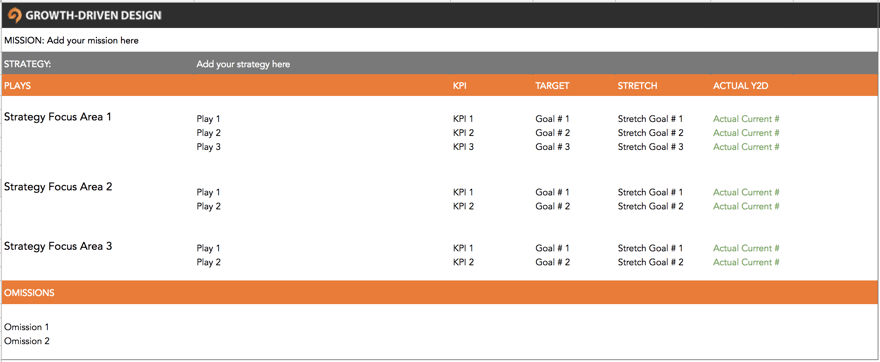
We tend to write the goals discussion on flipcharts - these are then stuck to a wall and referenced during the rest of the workshop (and typed up afterwards).
2. Personas
A buyer persona is a fictional representation of your ideal customer. Personas help increase empathy, form a common language and help evaluate ideas - they put your sales and marketing effort into context.
Persona creation is also likely to trigger a healthy debate amongst your participants. Keep the session on track - keep asking questions that prompt discussion - what are your persona’s challenges, where do they ‘hangout’ online / offline, what are they measured on, what are their interests?
Pro tip: if your client is struggling to define a persona, ask them “if your phone rang right now with a sales inquiry, above all else, who would you want on the other end of the line?
3. Fundamental Assumptions
We usually complete the fundamental assumptions on screen during the workshop. The aim is to boil down the website into the core elements that provide the foundations of the website.
This example (template available in the GDD Certification) is one we completed during our own internal Klood website GDD workshop:
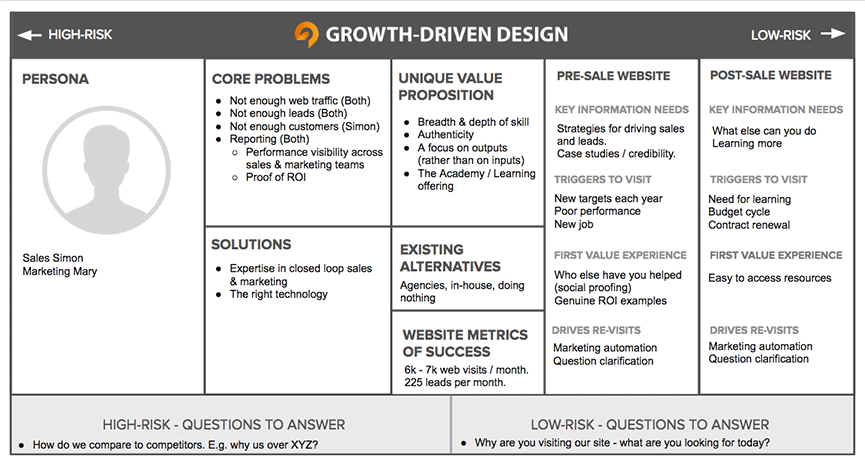
4. Creating a User Journey
We typically use this journey example to explain what is required:
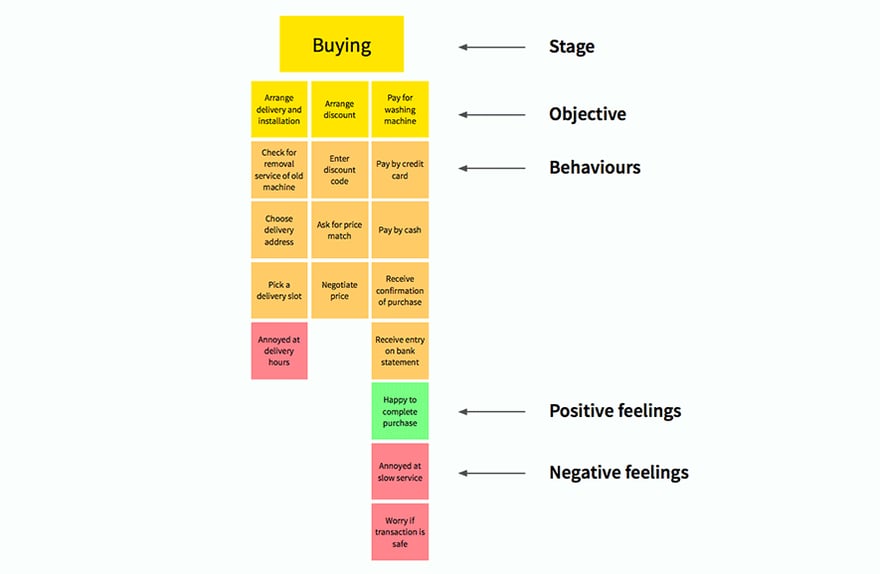
Source: https://medium.com/@wnialloconnor/how-to-build-an-experience-map-5e55b7ee4f32
What we have found works well is to divide the participants into subgroups. For example, you can split into three teams i) awareness ii) consideration and iii) decision. Give the groups time to think and to work on their ideas before presenting back to each other. Post-it notes are essential!
In the GDD Certification they also offer a great User Journey template you could use.
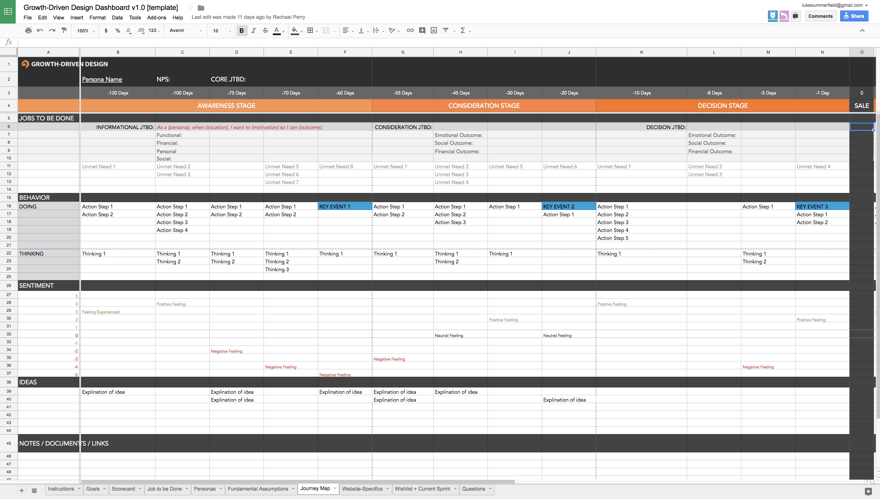
5. Building the Wish List
This is my favourite part of the workshop as all the previous hard-work comes together and forms the basic launch pad structure. There are two ways we’ve run this and I personally prefer the post-it note method as it is more collaborative:
Post-it notes: Give every participant some post-it notes. Ask them to start writing down their ideas for what the new website should contain - one idea per post-it note - and to stick these to a wall when ready. Once you’ve given people enough time to think, gather as a team and begin to group like ideas together. Once you’ve grouped them into categories you can begin to prioritize. The advantage of this method is that it gives everyone the space to think and to contribute.
Whiteboard: Simply ask people to call out their ideas and note them down on a whiteboard (or post-it note) as they call them out. Once you’ve got all ideas listed you can begin to group and prioritize them. Make sure you take the time to ask any quieter participants what they think. As the facilitator you should ensure everyone contributes; it can be all too easy to find that this shout out method only picks up thoughts from the more outspoken members of the group.
Prioritizing the wish list
Get ready to cull! If an idea doesn’t solve your persona needs or support the achievement of goals then it doesn’t go into the launch pad. Cut, cut and cut some more. You should be narrowing your wish list of (ideally) 100 to 200 ideas down to 20% of essential items only - these constitute your launch pad requirements. The remaining wish list ideas stay on the back-burner for now (we use an asana board to trap them) and will be reviewed during the continuous improvement phase.
Congratulations! Following your successful GDD strategy workshop you should now have:
- Clear website goals
- Personas
- Core website requirements
- Customer journey flows
- A prioritized wish list
- Client buy-in
- An energized project team
Everything you need to manage a tight focus and to deliver a successful launch pad website. When I think of a successful GDD workshop I am always reminded of the phrase ‘well begun is half done’.
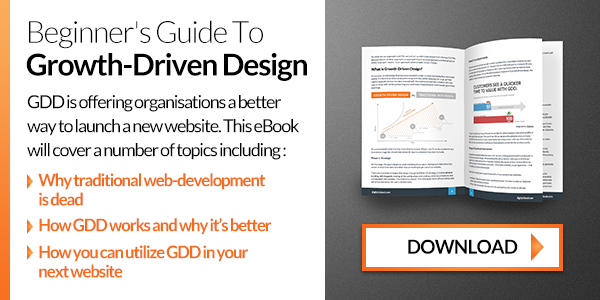
Photo by felipe lopez on Unsplash
Topics

Luke is Head of Growth-Driven Design at Klood Digital. He loves helping clients get the most from their websites and is always happy to discuss ideas for improvement over a good cup of coffee. https://www.linkedin.com/in/luke-brason/


